connection timed out chainloading failed
-
@geardog said in connection timed out chainloading failed:
No mention of next server.
So I would expect tcpdump to just not print it on the direct verbose text output. We did see it in the PCAP file. Or you have played with things so much that clearOS doesn’t send it anymore. But then I would expect the PXE boot to work just fine (with dnsmasq on the FOG server).
-
@sebastian-roth
No adjustments have been made. I was waiting for this to play out. -
so a montage of my poking around
In short, after chainloading fails and I run config, there is no proxydhcp listed
when I run dhcp net0 from shell
I then get fog popping up in proxydhcp with the correct ipWhat does this mean?
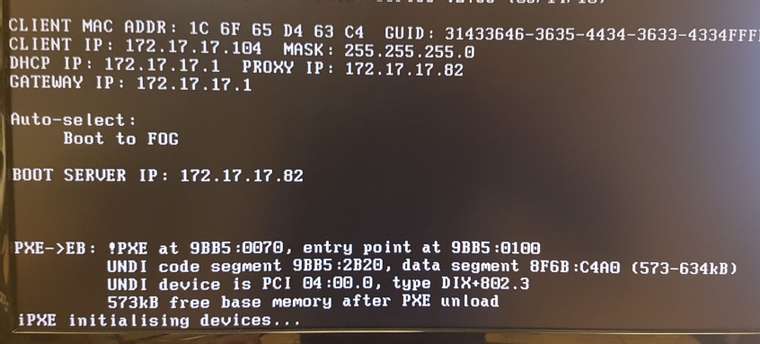


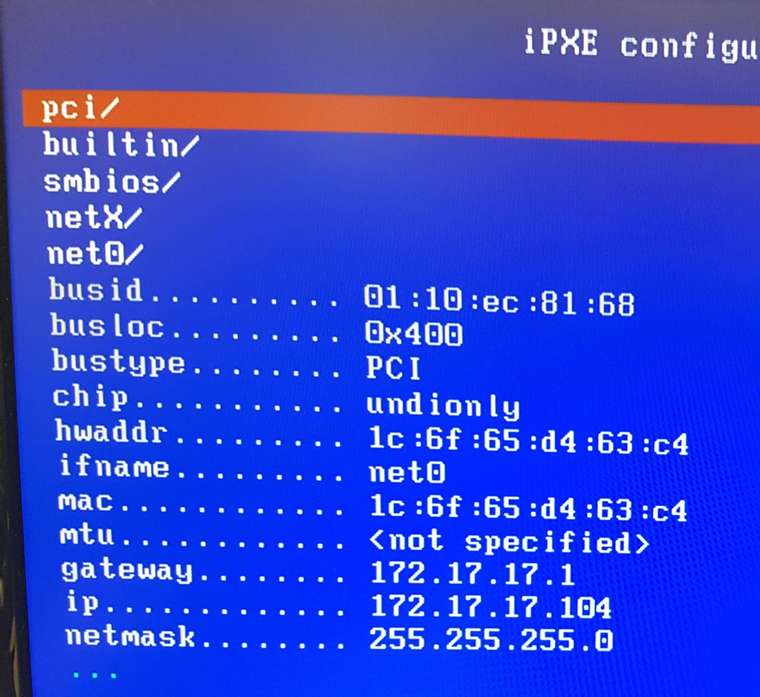
net0


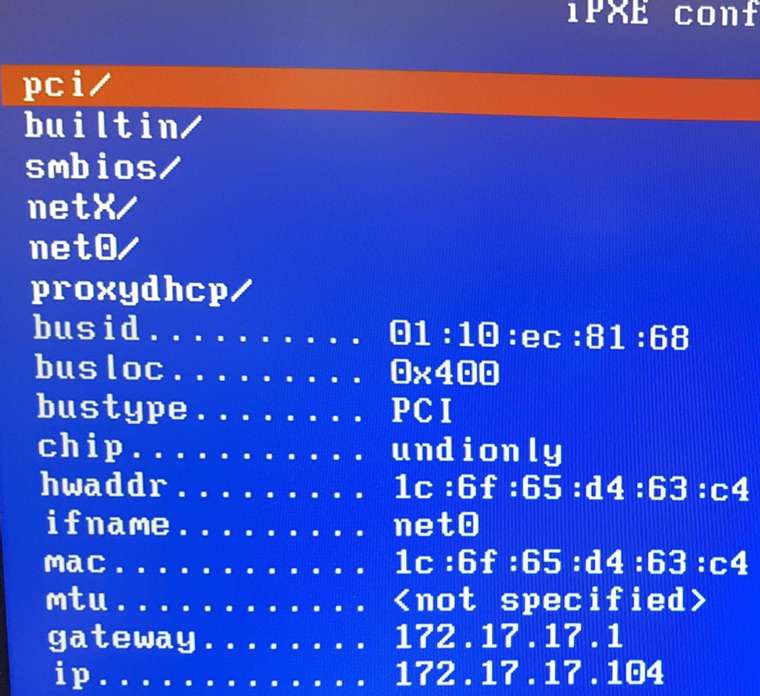
net0
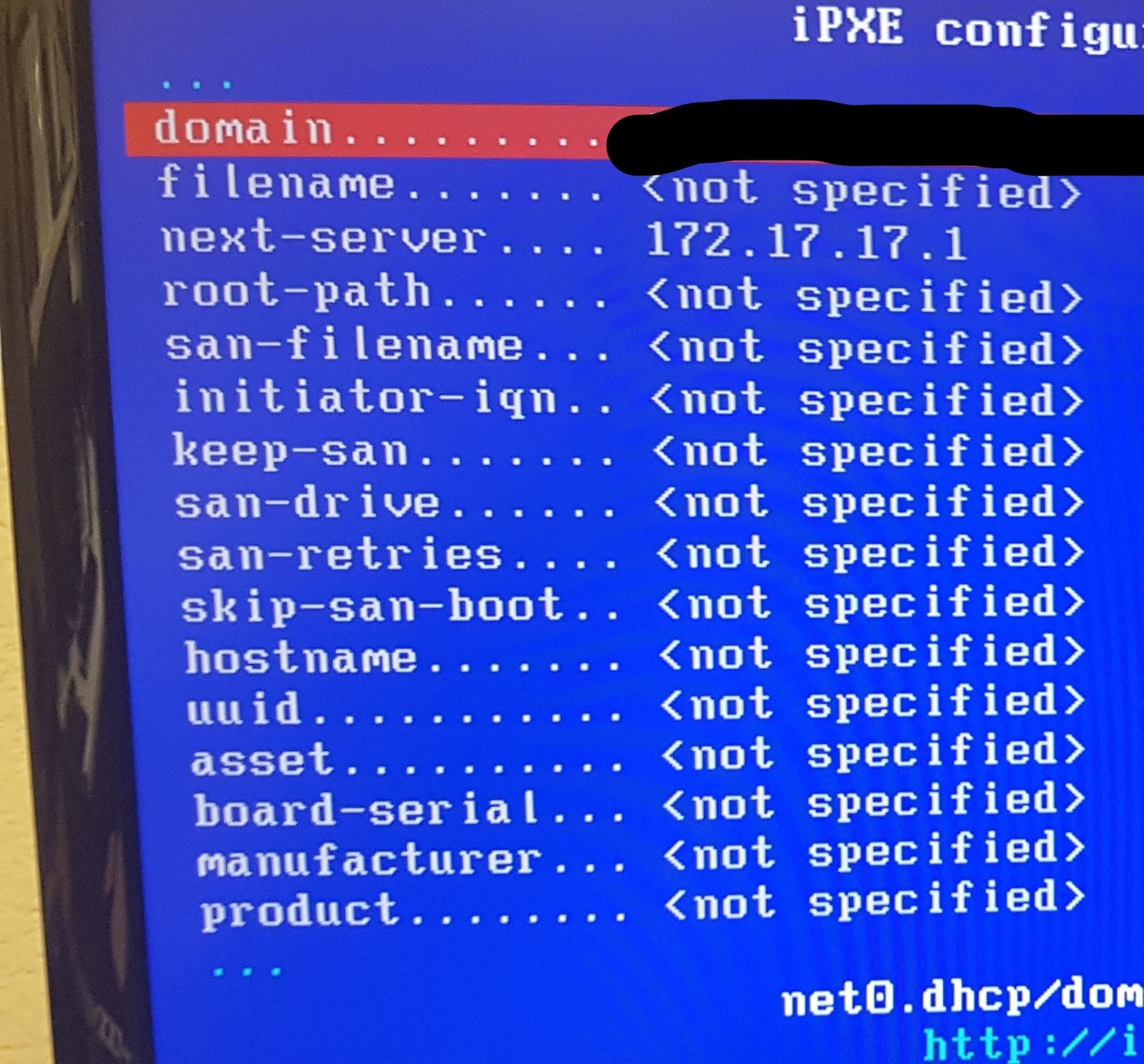
proxydhcp
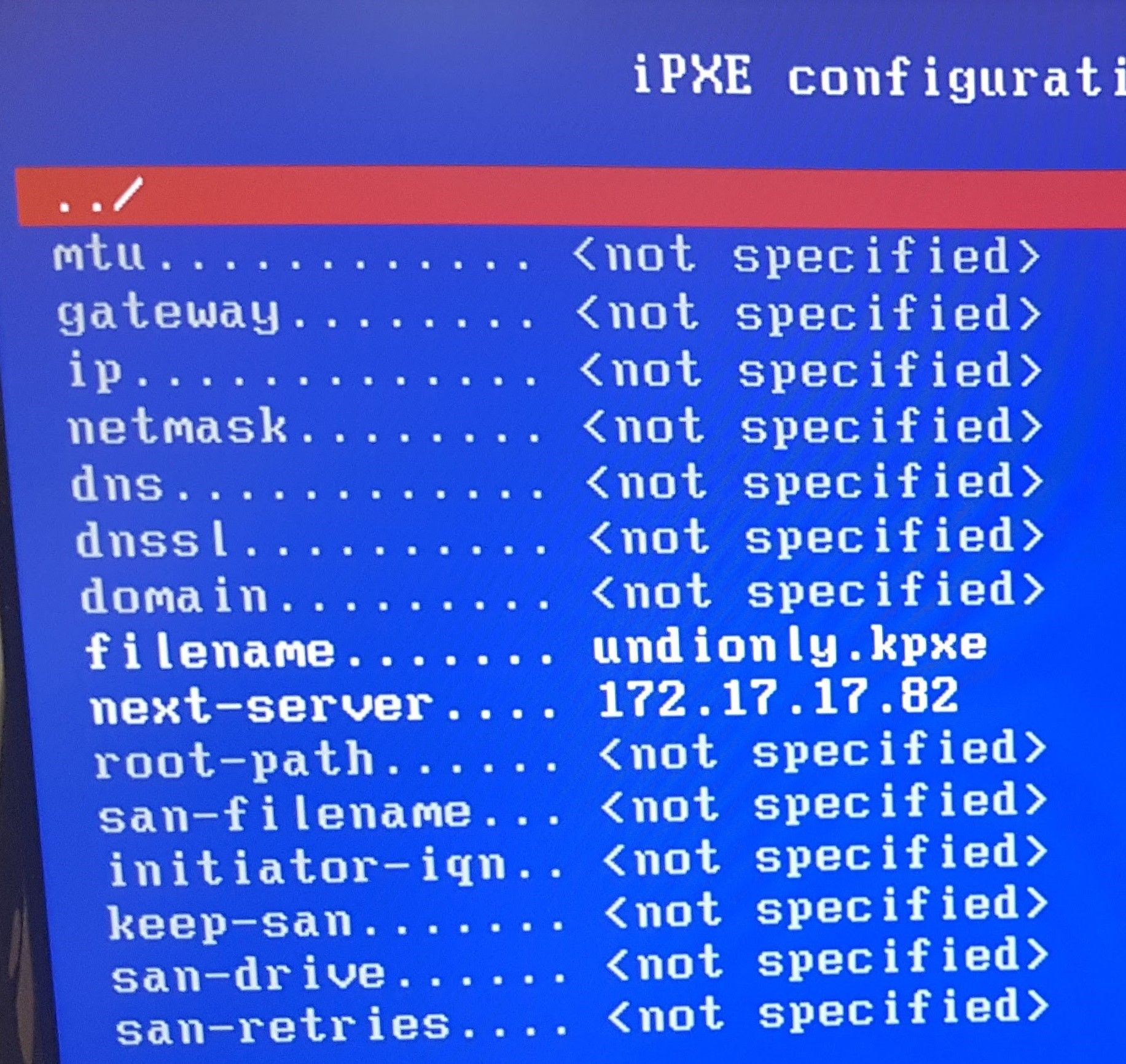
-
@geardog said in connection timed out chainloading failed:
In short, after chainloading fails and I run config, there is no proxydhcp listed
when I run dhcp net0 from shell
I then get fog popping up in proxydhcp with the correct ipSo it looks like proxydhcp is not set on the first round of DHCP done by iPXE. Quite strange. Could you please verify by printing the variable when you get to the iPXE shell right after chainloading fails:
iPXE> echo ${proxydhcp/next-server} ... iPXE> dhcp net0 ... iPXE> echo ${proxydhcp/next-server} ... -
aye, confirmed
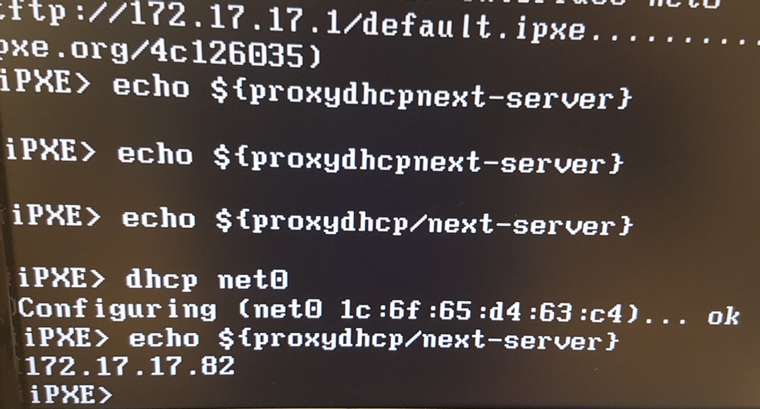
sticky slash key -
@geardog I am at a loss on why it would not populate the proxydhcp information on the first (successful) round of DHCP. May it’s something to do with timing. We have iPXE binaries that wait for 10 seconds before it does DHCP. Find those in
/tftpboot/10secdelay/directory on your FOG server. Either modify your dnsmasq configuration to point to the iPXE binary in that subdirectory or rename the one in/tftpboot/and copy the delay binary there for testing. -
@sebastian-roth
Well, I made the following edit in ltsp.conf# Set the root directory for files available via FTP. tftp-root=/tftpboot/10secdelayrebooted the fog vm
no apparent change in behavior…
Chainloading still fails, and shell>config output shows no proxydhcp section -
@geardog Too bad. Well then the next step is to build your custom iPXE binary. Use our script as base and just change those lines:
:proxycheck isset ${proxydhcp/next-server} && set next-server ${proxydhcp/next-server} || goto nextservercheckto
:proxycheck dhcp net0 isset ${proxydhcp/next-server} && set next-server ${proxydhcp/next-server} || goto nextservercheck -
@sebastian-roth
What does this get me into? Will I have to recreate/replace these when I reinstall fog? I may be ham fisted, as I’ve probably reinstalled fog 15 times during my use of it. I’d like to be aware of complications in SOP, moving forward. -
@geardog Yes sure, building your custom iPXE binaries needs manual steps every time you run the FOG installer.
-
@sebastian-roth So I’m not sure what has changed, as I’ve had to focus on other things, but now it works. I didn’t follow the most recent direction, but I’m booting various boxes via pxe successfully. No idea. …